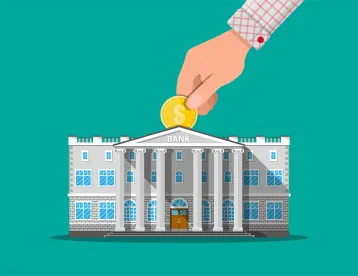In response to last year’s devastating hurricane season and other natural disasters, the Taxpayer Certainty and Disaster Tax Relief Act, which is a part of the Consolidated Appropriations Act, 2021 (the Act), included various relief provisions (similar to those under the Coronavirus Aid, Relief, and Economic Security Act of 2021 (CARES Act)), designed to assist individuals who suffered an economic loss as a result of these disasters. The Act, signed by former President Trump on December 27, 2020, provides individuals with increased access to their retirement plan accounts as well as plan loan and hardship distribution-related relief as described in more detail below. The relief under the Act generally expires on June 25, 2021.
Disaster Relief Distributions
The Act allows employers to amend their qualified retirement plans to permit Qualified Individuals to take one or more Qualified Disaster Distributions (QDD) from their plan accounts in connection with a Qualified Disaster. A “Qualified Disaster” generally includes any major disaster that occurred during the period starting on December 28, 2019 and ending on December 27, 2020 in an area that has been declared a “qualified disaster area” under the Robert T. Stafford Disaster Relief and Emergency Assistance Act, excluding any area declared a disaster area solely by reason of the COVID-19 pandemic.
A QDD may be made to a Qualified Individual at any time on or after the first day of the incident period (as specified by the Federal Emergency Management Agency) for the Qualified Disaster and before June 25, 2021. For these purposes, a “Qualified Individual” is someone:
-
Whose principal place of abode was located in the qualified disaster area at any time during the Qualified Disaster’s incident period; and
-
Who suffered an economic loss by reason of the Qualified Disaster.
The aggregate amount of QDDs received by a Qualified Individual for any tax year may not exceed $100,000 (reduced by any amounts treated as QDDs received by such individual in prior years), except that this limitation is applied separately to QDDs made with respect to different Qualified Disasters to a Qualified Individual affected by such disasters.
QDD recipients will be taxed on the distribution amount ratably over a three-year period beginning with the year when received, unless the individual elects otherwise. QDDs are not subject to the 10% early distribution penalty or mandatory withholding that would normally apply to plan distributions. In addition, a Qualified Individual may, at any time during the three-year period beginning on the day after the QDD is received, recontribute (in one or more contributions) the aggregate amount of the distribution to the plan from which it was distributed or to an individual retirement account (IRA) or other eligible retirement plan, provided the plan accepts rollover contributions.
Plan Loan Relief
Similar to the plan loan relief under the CARES Act, the Act also provides Qualified Individuals (as defined above) with two separate relief provisions related to plan loans. First, for any qualified plan loan made between December 27, 2020, and June 25, 2021, the maximum loan amount is increased to the lesser of $100,000 or 100% of the Qualified Individual’s account balance (rather than the $50,000 or 50% limits that normally apply to plan loans).
Second, the Act allows Qualified Individuals who have one or more outstanding plan loans on or after the first day of the incident period for the Qualified Disaster, to elect to suspend the due date of any payment(s) with respect to such loan that otherwise become due on or after the first day and within 180 days after the last day of such Qualified Disaster’s incident period for one year (or, if later, until June 25, 2021). Following the end of the suspension, repayment amounts will need to be adjusted to reflect for additional interest accrued during this period, and the term of the loan extended in proportion to the suspension period.
Recontributions of Pre-Disaster Hardship Distributions
Under the Act, employers can also amend their qualified plans to allow participants who received a Qualified Distribution to recontribute such distribution via one or more rollover contributions to the plan, an IRA, or other eligible retirement plan that accepts rollover contributions. A “Qualified Distribution” means:
-
A hardship distribution from a qualified plan under Section 401(k) of the Code, or from a 403(b) annuity plan, or a distribution to a “first-time homebuyer” from an IRA (within the meaning of Code Section 72(t)(2)(F));
-
Which was to be used to purchase or construct a principal residence in a qualified disaster area, but which was not so used on account of the Qualified Disaster with respect to such area; and
-
Which was received no more than 180 days before the first day and within 30 days following the end of the Qualified Disaster’s incident period.
Repayment contributions can be made at any time during the period beginning on the first day of the Qualified Disaster’s incident period and ending on June 25, 2021.
Plan Amendments
The disaster relief provisions described above are optional, and employers may elect to amend their qualified plans to include all, some, or none of the relief. Employers adopting any of these disaster relief provisions have until the end of the first plan year beginning on or after January 1, 2022 (2024 for governmental plans), to amend their plans. For example, a calendar year non-governmental plan adopting any of these changes must be amended by no later than December 31, 2022.
Next Steps
Employers should first decide which disaster relief provisions, if any, they want to adopt. In making this decision, employers should coordinate with their plan’s record-keeper to identify any potential implementation issues or limitations.
Employers who adopted similar relief under the CARES Act will find it easier to adopt these changes, while those that didn’t may experience some lag time prior to implementation in order to allow for any necessary changes to the employer’s and/or record-keeper’s systems, forms, and procedures.
Finally, employers should consider how the changes will be communicated to employees, particularly in light of the relief’s limited duration. Accordingly, employers should make every effort consistent with IRS and DOL COVID-19 guidance relaxing plan notification requirements, which we discuss here, to notify participants and employees as soon as administratively feasible.




 />i
/>i

